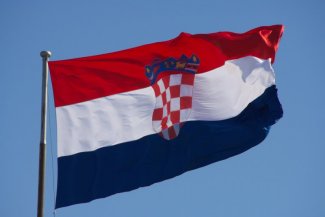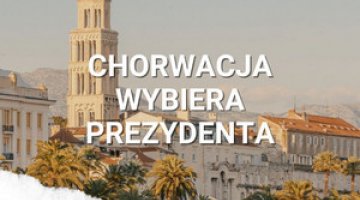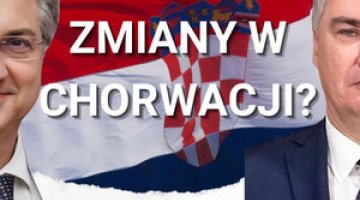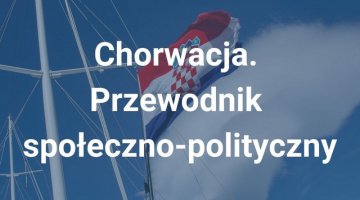The fading star pupil: ten years of Croatia’s membership in the European Union

A decade ago, on 1 July 2013, the Republic of Croatia became a member of the European Union. Despite being the newest EU member, it is one of the countries in Southeastern Europe that have made the most headway in the integration process. In 2023, it was admitted to both the Schengen area and the eurozone, a feat that has eluded both Bulgaria and Romania, even though they joined the EU a few years earlier. Membership in the EU has brought some economic benefits to Croatia, such as stable economic growth, a gradual rise in living standards and a drop in unemployment, but its poor absorption of EU funds, the inefficiency of its state institutions and structural problems in its national economy have prevented it from taking full advantage of these opportunities. Moreover, the free movement of people has exacerbated negative demographic processes. Nevertheless, Croatia has to some extent benefited from its membership in the EU. Thanks to the EU-funded LNG terminal on the island of Krk, it has an opportunity to become an important player in ensuring energy diversification in the region. Croatian officials have successfully used their presence in the EU institutions to raise the issue of their compatriots who live in Bosnia and Herzegovina to the level of transnational debate. However, it appears that Croatia has failed to take full advantage of its leverage in the Western Balkans.
From Eurosceptics to moderate Euro-optimists
Croatia’s integration with the EU began a decade after it gained independence in 1991. To reach this milestone, it was necessary to democratise the country. This process picked up speed after 1999, following the death of President Franjo Tuđman, the father of the country’s independence but also a politician with authoritarian tendencies. Initially, public attitudes towards the country’s potential membership in the EU were rather negative. At the heart of this Euroscepticism was the reluctance to cede the competences of a newly established state. Opponents of accession to the EU also believed that Croatia was too small to have real clout on the European arena. In addition, the issue of cooperation with the International Criminal Tribunal for the former Yugoslavia (ICTY), one of the political conditions for closer ties with the EU, was highly controversial. The capture and The Hague tribunal’s 2011 conviction of retired generals Ante Gotovina and Mladen Markač heightened discontent among the public, which saw them as national heroes rather than war criminals. In that year, only 23% of Croatian people expressed support for the country’s EU integration.[1] In 2012, these two men were acquitted.
The escalating territorial dispute with Slovenia added to the Eurosceptic sentiment. Slovenia made its agreement to Croatia’s further progress in European integration conditional on a favourable delimitation of the two countries’ maritime border in the Bay of Piran. Fearing the outcome of the accession referendum, the Croatian government abolished the requirement for a 50-percent turnout. Although 66% of citizens eventually voted in 2012 in favour of joining the EU, the scant enthusiasm for accession was reflected in the low turnout of only 43% – one of the lowest in the EU’s history. However, the Croatian people have gradually gained confidence in the EU and its institutions, mainly due to the disillusionment with their own political class. According to a survey conducted in 2013, the year of the country’s EU accession, 36% of them trusted EU institutions, while confidence in their own government and in the unicameral parliament, the Sabor, stood at just 16% and 12% respectively.[2] In the same survey conducted a decade later, 52% expressed trust in the EU while only 23% had confidence in both the government and the national parliament.[3]
Tourism-dependent economy
A good economic performance in the post-accession period, popular EU-funded projects and the success in joining the Eurozone and the Schengen area (especially when compared to Romania and Bulgaria, which remain outside these integration circles) have likely contributed to the positive assessment of the country’s EU membership. However, Croatia has so far failed to use its accession as an impetus to overcome the main challenges facing the country, such as low productivity, pervasive corruption (the country ranks fourth from the bottom in the EU in terms of perceived corruption)[4], a shortage of educated workforce and emigration.
Chart 1. Dynamics of Croatia’s economic growth compared to the countries of the region

Source: author’s own compilation based on data from Eurostat.
Croatia entered the EU while still suffering the consequences of the 2008 global financial crisis in the form of a prolonged recession. Access to the single market and EU funds allowed it to return to the path of stable (albeit not very high) growth, which averaged 2–3% of GDP between 2015 and 2020. This, in turn, led to an increase in GDP per capita in purchasing power parity relative to the EU average – from 61% in 2013 to 73% in 2022. However, Croatia started from a higher level than many other countries in the region: when it joined the EU, it already had a higher GDP per capita (around €10,500) than the EU member states from the region (including Hungary, Poland, Romania and Bulgaria); in 2022, it stood at €14,500, slightly lower than Poland’s. The country grew more slowly than neighbouring Hungary and Poland, but at a comparable rate to non-EU Serbia[5] (see Chart 1). The most visible success in this period was the decrease in the number of the unemployed. In 2013, the unemployment rate was 17.25%, before falling to only 6.75% in 2022 (one of the best results in the history of independent Croatia; see Chart 2). However, the 10-point decrease over that decade is not only attributable to the good economic situation, but also to negative demographic trends and the emigration of the workforce.
Chart 2. Unemployment rate in Croatia in 2008–2022

Source: author’s own compilation based on data from Statista.
Map 1. The share of tourism in the GDP of EU countries in 2019

Source: author’s own compilation based on data from Landgeist, landgeist.com.
The service sector has been the backbone of the Croatian economy for a decade: its share of the country’s GDP is as high as 74%. Industry (including construction) accounts for 23% of GDP, and agriculture makes up 3%. The main problem is the country’s continued dependence on tourism, which generates 25% of its GDP (see Map 1).[6] This makes it extremely vulnerable to external shocks. As an example, Croatia’s GDP fell by 8.5% in 2020 during the COVID-19 pandemic. This is the Croatian variant of the so-called ‘Dutch disease’ – an economy’s heavy dependence on one fast-growing industry. The dependence of Croatia’s GDP on this sector is much higher than in the case of European tourism giants such as Spain and Italy. Moreover, this exacerbates the disparities in development, unemployment rates and living standards between the country’s coastal and mainland parts, which the redistribution of budgetary resources has only marginally reduced. Such a heavy emphasis on the development of tourism also contributes to the neglect of the other sectors of the economy and to the deepening deindustrialisation of the country, which has led to a negative foreign trade balance (-€11 billion in 2021).
Map 2. GDP per capita of Croatia’s individual regions in 2020

Source: Croatian Bureau of Statistics, dzs.gov.hr.
Problems in the labour market and regional differences
According to the Ministry of Tourism and Sport, the shortage of qualified staff is becoming the most important problem in this industry.[7] This is mainly due to mass emigration and low birth rates. According to the latest census from 2021, Croatia has 3.9 million citizens, 10% less than in 2011.[8] Demographic trends look even worse than during the war-torn 1990s, when 7% of the population left the country. The possibility of working legally in countries with higher standards of living (mainly Germany, Austria and Ireland) is one of the primary reasons for the mass exodus to the EU, in addition to excessive state bureaucracy, a weak and inefficient judiciary, corruption and the incompetence of the political elite.[9]
Map 3. Population change in Croatia based on the 2011 and 2021 censuses

Source: Croatian Bureau of Statistics, dzs.gov.hr.
Data published by the Croatian Bureau of Statistics shows that the process of depopulation is not evenly spread. It has mainly affected Slavonia, the flatland part of Croatia located far from the sea (one in five of its inhabitants has left), and to a lesser extent the more affluent parts along the Adriatic and Zagreb (see Maps 2 and 3). Even in the coastal županias (counties), development is concentrated on the coast, while the interior remains largely neglected; this is another factor that encourages emigration.
Investments: eye-catching or efficient?
The low absorption of EU funds is one of Croatia’s main problems and barriers that prevent it from taking full advantage of its EU membership. From 2013 to 2022, the country was supposed to receive up to €10.7 billion from European structural and investment funds, but failed to make use of as much as 46% of the approved money.[10] According to a report by the European Court of Auditors, Croatia was the country that absorbed the least resources from ESI funds for 2014–2022.[11] The reasons for this financial mismanagement include the inefficient state administration, inadequate cooperation between the public and private sectors, corruption, and irregularities related to public procurement. Croatia began to perform slightly better after 2019, when Gabrijela Žalac, who was accused of involvement in corruption scandals, stepped down as minister of regional development and European funds.[12] Over the past two years, the country has achieved significant progress in the use of EU funds: it now absorbs up to 72% of those allocated.[13]
Croatia’s EU-funded investment successes include the region’s flagship energy diversification project and LNG infrastructure. Following Russia’s aggression against Ukraine, a floating terminal on the island of Krk has proven to be one of the most important projects for securing an alternative to Russian gas supplies to the region. The plan to build the facility in Omišalj on Krk was conceived long before Croatia joined the EU, but it took pressure from Brussels and Washington to ensure it was constructed. Russian influence in the country and the difficulties of implementing such a major project in an uncertain economic climate were the main reasons why it was delayed by nearly a decade. The government was also reluctant to foot the bill for the project since it could obtain gas from the existing source (until 2021, most of the imported gas indeed came from Russia). Construction began in 2019 and cost a total of €234 million, including more than 43% from the EU’s Connecting Europe Facility. The floating LNG terminal finally became operational in January 2021. In its current form, its regasification capacity is 2.9 bcm per year, but talks are underway to increase it to 6.1 bcm by 2025, which would significantly enhance Croatia’s role as the region’s energy hub. The terminal’s expansion is important not only in the context of shifting away from Russian crude – the government also wants to use this facility to pursue its interests in Bosnia and Herzegovina. The Southern Gas Interconnection project envisages the creation of the first gas pipeline link between the two countries with a capacity of 1.5 bcm. This presents Sarajevo with an opportunity to reduce its dependence on Russian gas while Croatia gains an important instrument with which to influence its neighbour.
The construction of the 2.4 km long bridge to the Pelješac Peninsula is a much more debatable venture in terms of its economic benefits. This was co-funded by the EU and put into operation in July 2022 (see Map 4). It connects the enclave around Dubrovnik (this is separated by a strip of Bosnian coastline) with the rest of the country. The bridge is the largest Croatian infrastructure project to which the EU has contributed: its total construction cost was €526 million, €357 million of which was provided by the EU. The government in Sarajevo sharply criticised the first plans to erect the bridge when they were announced in 2005, claiming that it would cut off Bosnia’s only coastal town, Neum, from the open sea.[14] The location of the bridge was changed, but the implementation of the project was put on hold due to the economic crisis; in 2012, the social democratic government of Prime Minister Zoran Milanović (who is the current president of Croatia) decided to scrap it altogether. It was not until Croatia became a member of the EU that the investment, which has been dubbed a ‘generational project’, was given a new lease of life. The bridge is an example of a development that is both extremely costly and symbolically important, as it provides a direct link between two previously separated parts of the country. At the same time, it does little to address the most pressing needs of Croatia’s infrastructure network and makes a negligible contribution to the country’s economic development. While it certainly allows for faster access to Dubrovnik, this city of just over 40,000 inhabitants is more a tourist attraction than a centre of industry and innovation. In practice, therefore, the project further deepens the country’s dependence on tourism. The rationale for the construction of this link has also been undermined by the actions taken by local politicians who have been seeking to restrict tourist traffic to the ‘pearl of the Adriatic’.
Map 4. Major EU investments: the LNG terminal and the Pelješac bridge

Source: author’s own compilation.
Top performer in EU integration
Croatia’s entry into the Eurozone and the Schengen area was an undeniable success for the EU’s youngest member state. The adoption of the European currency was a priority for the current Prime Minister Andrej Plenković and the governor of Croatia’s central bank, Boris Vujčić, who lauded its benefits to the public. This milestone event took place on 1 January 2023. The transition from the kuna to the euro was relatively smooth as Croats had already been using the single currency (and previously the German mark) in their day-to-day lives, and had kept their savings and taken out loans in it even before their country officially joined the monetary union. About two-thirds of the country’s public debt was denominated in euros.[15] In 2021, EU countries, mainly from the Eurozone, such as Germany, Italy and Slovenia, accounted for more than 70% of Croatia’s trade. By adopting the single currency, the country has gained greater price stability and reduced the exchange rate risk in trade transactions. Another positive consequence of this step is the rising value of foreign investments, which have been flowing in mainly from EU member states: Austria, the Netherlands, Germany, Italy and Luxembourg. The most important branch of the economy has also benefited, as more than half of all tourists come from Eurozone countries. The government in Zagreb hopes that Croatia’s accession to the Eurozone will raise its political standing in the community, thus bringing it into the mainstream of integration.
To Sarajevo via Berlin
After the overarching foreign policy goals from the beginning of this century were achieved with the accession to NATO (2009) and the EU (2013), over the last decade Bosnia and Herzegovina has become one of the most important fields of activity for Croatian diplomacy, which has focused on defending the interests of the Croats who live there. All the governments in Zagreb to date have emphasised the importance of this issue. The Croats, who live mainly in the southwestern part of Bosnia and Herzegovina, do not have their own entity within this federal state.[16] Croatian governments have claimed that this means they are not treated on equal terms with the other peoples of Bosnia and Herzegovina (however, they make up only 15% of its population).[17] Accession to the European Union in 2013 gave Croatia the opportunity to play a greater role in the Western Balkans, with special emphasis on Bosnia and Herzegovina. The strength of Croatian political influence can be seen in the fact that the Bosnian Croats have long been represented by the Croatian Democratic Community of Bosnia and Herzegovina (HDZ BiH), an affiliate of the HDZ, which has been in power in Croatia for years.
Croatia has been building its status in the EU primarily on the basis of its close relations with Germany, which explicitly supported its statehood on the eve of Yugoslavia’s break-up. The HDZ’s relations with Germany’s Christian Democrats and cooperation with them in the European People’s Party are of particular importance in this regard. One of the Christian Democrats in the European Parliament is the current High Representative for Bosnia and Herzegovina, Christian Schmidt (he has held this position since 1 August 2021). He was previously the German federal minister for food and agriculture and has had close ties with the government in Zagreb for years.[18] Schmidt’s acceptance of the Order of Ante Starčević (a high state award) from Croatia’s prime minister in 2020 caused significant controversy on the Bosnian political scene. The outrage of the Bosnian leaders was compounded by the fact that this order had previously been awarded to convicted war criminals. The High Representative, who has extensive powers in Bosnia and Herzegovina, has also triggered disputes by introducing a number of changes in favour of the Croats.[19] In the view of the government in Zagreb, Schmidt’s actions have been appropriate and placed the Bosnian Croats on a more equal political footing. At the same time, his steps have strengthened the centrifugal forces in Bosnia and Herzegovina, and have contributed to the current institutional crisis that poses a challenge for Croatia regarding the stability of its neighbour.
Assessment and outlook: cohesion above all
The first decade of Croatia’s membership in the EU has been a time of moderate but noticeable economic development. For internal reasons, such as corruption, institutional weakness and the overreliance on one sector of the economy, Croatia has failed to meet the full potential of its accession. The free movement of people within the EU has become the cause of one of Croatia’s biggest problems: emigration and the gradual decrease in its population. Although there is a visible convergence in the level of development between Croatia and the ‘old’ EU member states, disparities have been growing within Croatia itself: between the more prosperous coast and the capital city on the one hand and the inland (mainly northeastern) part of the country on the other. Negative demographic trends have also been generating challenges for tourism, as until now, the residents of the interior (mainly Slavonia) have been catering to the throngs of visitors from other countries during the summer seasons. In 2022, a record 18.9 million tourists arrived in Croatia – five times the country’s entire population.
EU membership increases Croatia’s chances of becoming a regional energy hub. EU support has made it possible to build the floating LNG terminal, whose importance has increased especially in the context of the war in Ukraine and the shift away from Russian resources. In addition, EU funds will underpin the plans to increase its current import capacity and building a new gas pipeline with Slovenia. Gas from the Croatian terminal will help diversify supplies to Austria, Bosnia and Herzegovina, Germany, Slovenia and Hungary, thus strengthening Croatia’s position in the region. Croatia has also been raising its profile in Europe by participating in various formats of regional cooperation, although this involvement has thus far been inconsistent. The Three Seas Initiative was launched in 2015 on the initiative of the presidents of Poland and Croatia, but the latter’s activity in this project was significantly reduced when Zoran Milanović replaced Kolinda Grabar-Kitarović as president. The current president views this initiative with scepticism out of fear that Croatia’s membership in it could lead to a serious deterioration in its relations with Germany.
Croatia has successfully used its membership in the EU to pursue its own foreign policy objectives: the government has managed to put the issue of the Croats who live in Bosnia and Herzegovina on the agenda of the European debate. For Croatia, EU integration also offers advantages from the perspective of the enlargement process to include the Western Balkan countries. Indeed, three countries located in the immediate vicinity of Croatia have been seeking to join the EU community: Bosnia and Herzegovina, Montenegro and Serbia. The dispute with Slovenia has shown that the negotiating position of a country that is already in the EU is much stronger. This issue could prove crucial as Croatia still has to deal with unresolved border disputes, settlements relating to the wars of the 1990s and the struggles over the status of the Croatian minority in these countries. Nevertheless, any attempts to force concessions by threatening to block their accession process could undermine Croatia’s status in the region once these countries join the EU.
[1] The survey was carried out by the Mediana agency. See D. Butković, ‘Samo 23% Hrvata za ulazak u EU! Čak 95% smatra presudu nepravednom’, Jutarnji, 16 April 2011, jutarnji.hr.
[2] ‘Standard Eurobarometer 80 – Autumn 2013’, The European Commission, December 2013, europa.eu.
[3] ‘Standard Eurobarometer 98 – Winter 2022–2023’, The European Commission, February 2023, europa.eu.
[4] ‘Corruption Perceptions Index – Croatia, Transparency International, transparency.org.
[5] See ‘Real GDP per capita’, ec.europa.eu/eurostat.
[6] Data from: ‘Share of travel and tourism’s total contribution to GDP in European Union member countries (EU 27) and the United Kingdom (UK) in 2019 and 2022’, Statista, 2023, statista.com.
[7] ‘Turizam je više od aktivnosti u slobodno vrijeme i zahtijeva stručnu i kvalificiranu radnu snagu’, The Ministry of Tourism and Sport of Croatia, 29 May 2023, mint.gov.hr.
[8] ‘Popis 2021’, Croatian Bureau of Statistics, dzs.gov.hr.
[9] Z. Galić, ‘Iseljavanje visokoobrazovanih: prihodi, ali i korupcija, opći osjećaj netrpeljivosti u društvu…’, Ideje.hr, 14 November 2019, ideje.hr.
[10] Izvješće o korištenju Europskih i strukturnih fondova, The Croatian Parliament, April 2021, per: strukturnifondovi.hr.
[11] Introducing the 2021 annual reports of the European Court of Auditors, ETO, eca.europa.eu.
[12] The European Public Prosecutor's Office (EPPO) accused the former minister of defrauding the national and EU budgets by purchasing software at an inflated price. See ‘Four arrested for suspected fraud at Croatian Ministry of Regional Development and EU Funds’, 10 November 2021, eppo.europa.eu.
[13] ‘Hrvatska ubrzala iskorištenost sredstava kohezijskih fondova Europske unije, iza Hrvatske 12 država Europske unije’,
The Ministry for Regional Development and EU Funds, 3 November 2022, razvoj.gov.hr.
[14] Under the 1699 Treaty of Karlowitz, the Republic of Dubrovnik ceded a slice of the Adriatic coast including Neum to the Ottoman Empire to separate itself from the Republic of Venice. The area later became part of Bosnia and Herzegovina.
[15] Program konvergencije Republike Hrvatske za razdoblje 2023. – 2025, The Ministry of Finance of Croatia, April 2022, per: commission.europa.eu.
[16] Bosnia and Herzegovina is a federal state that consists of two entities: Republika Srpska and the Federation of Bosnia and Herzegovina. The latter is mainly populated by Croats and Muslims.
[17] Bosnia and Herzegovina's last population census took place in 2013, so the country's current ethnic composition may differ significantly from the one presented in this paper.
[18] The office was established under the Dayton Agreement. The High Representative for Bosnia and Herzegovina has extensive legislative authority and the power to remove politicians from their positions in both of the constituent parts of the country.
[19] For example, Schmidt used his prerogatives on election night in October 2022, when he pushed through an amendment regarding the composition of the upper house of parliament of the Federation of Bosnia and Herzegovina. The change gave a privileged position in this entity to politicians from HDZ BiH, the main party of the Bosnian Croats.





